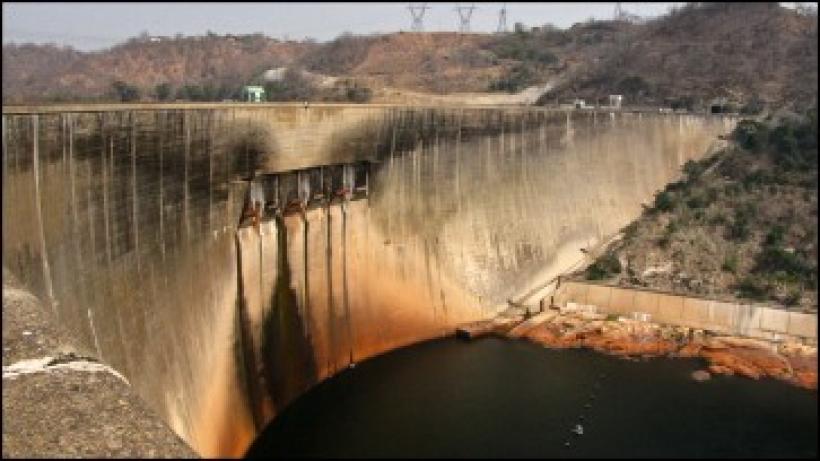
Lights out: Zambia’s electricity crisis
As daily power-cuts become the new normal in Zambia, effects are being felt by households, farms and small businesses as well as vital growth sectors such as mining. Zambia's dependence on hydro-power is a well-known risk factor of power generation. Future efforts should focus on growing and diversifying generation capacity to keep pace with Zambia's economic growth.
At this time of year, as temperatures and humidity gradually rise, the whole of Zambia, from the cramped office workers in Lusaka to the heavily rain-dependent farmers across the country, eagerly anticipate the much needed relief brought by the start of the rainy season. This year there is a particularly heavy sense of urgency due to the country’s deepening power crisis, made worse by the delayed onset of the rains. The anxiety is reflected in the increasingly worrying reports on the declining water levels in Kariba Dam, the world’s largest man-made reservoir. The dam is the single biggest power source for Zambia and neighbouring Zimbabwe.
Unending power cuts stifle economic activity even in Zambia's high-value mining sector
Zambia has experienced daily 8-hour power-cuts since July 2015. Low water-levels at the main reservoirs for hydroelectric generation have triggered a power deficit of 34% of demanded electricity. With the country’s historically abundant power supply, the sudden crisis has caught households and businesses unprepared and without back-up sources of energy.
Left without electricity, low levels of available gas, and exceedingly expensive generators, many households have reverted to charcoal for cooking, causing a spike in prices and accelerated the rate of deforestation. While only 22% of the population has electricity access (World Bank, 2012 data), everyone has been affected indirectly through disruptions to the municipal water supply.
Low water-levels at the main reservoirs for hydroelectric generation have triggered a power deficit of 34% of demanded electricity
The crisis coincides with the country’s toughest economic challenges in years, compounding the economic slowdown. Large businesses, with installed generators, have seen production costs rise while smaller businesses have cut production or operate at night when the power is on. The already struggling mining sector, lifeblood of the economy and biggest electricity consumer (55%), has had to cut power usage by 30%.
Hydro-dependency limits Zambian power generation capacity
Authorities attribute the crisis squarely to lack of rainfall. However, commentators justifiably question why the crisis wasn’t anticipated and cite mismanagement and overuse of water resources as contributing factors.
From a longer-term perspective, the roots of the current crisis lie in the growing shortfall in electricity supply since 2000, as new capacity began lagging behind the country’s rapid economic growth. The trend was recognised quite early, so most new power projects have never made it past the planning/procurement stage. With hydro accounting for 95% of capacity, droughts and expansion of capacity at existing plants has put further pressure on water reserves.
commentators justifiably question why the crisis wasn’t anticipated and cite mismanagement and overuse of water resources as contributing factors.
Thus, while Zambia’s installed capacity has continuously exceeded demand, actual generation, which is limited by water reserves, has fallen short of demand since 2006. In the subsequent years, the country experienced periodic power-cuts, but nothing comparable in scale or duration to the current crisis.
Waiting for the rains - shortages anticipated through 2018 at least
While the population is pinning its hopes on the weather gods, the crisis, sadly, is unlikely to be resolved by rainfall alone. With the trend of increasingly unpredictable weather patterns across the region, Zambia received little rain in 2015. The remainder of the rainy season is also predicted to be dry due to the intensity of the El Nino.
While a normal rainy season would help alleviate the immediate crisis, it would not solve the problem altogether. Replenishing water reservoirs will require several years of balanced rainfall and usage. Recent studies suggest that the power shortage will continue through 2018, even with above-average rainfall.
..alleviating the power crisis will require continuously growing capacity, diversifying generation and better management of water resources
Next steps
A solution to the crisis requires both steps to mitigate immediate effects and longer-term policies to tackle the fundamental vulnerabilities of the country’s power sector. The success of both sets of actions fundamentally hinge on implementing cost-reflective tariffs. This is essential to limit pressures on public finances and attract greater private investment into the sector. Yet, a recent decision to implement a substantial tariff adjustment was abruptly reversed, compromising the government’s ability to address the underlying problem.
As a short term measure, expensive emergency power is being imported from the South African Power Pool. Solar projects are also under consideration, due to the potential for rapid implementation.
In the longer-term, alleviating the power crisis will require continuously growing capacity, diversifying generation and better management of water resources. Implementing these measures may necessitate fundamental restructuring of the sector aimed at improving planning, procurement, financial sustainability and encouraging participation by the private sector.

